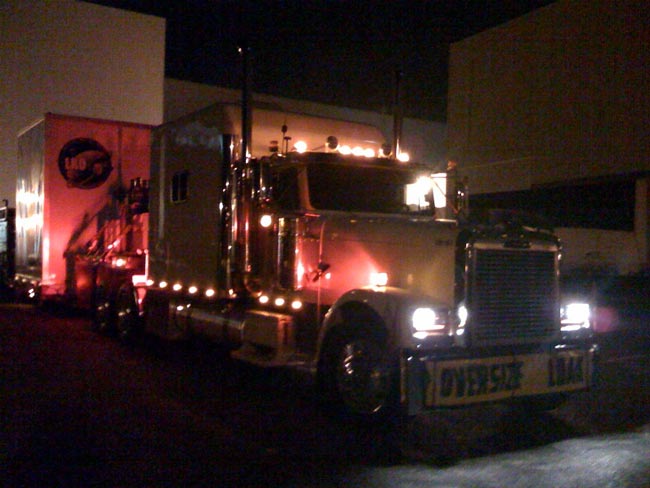Two NASA Moon Probes Head to Launch Site

Twospacecraft are headed for NASA's Florida space center to prepare for theirpiggyback mission to the moon.
NASA'sLunar Crater Observation and Sensing Satellite, known as LCROSS, set out fromNorthrop Grumman's facility in California this week for the agency?s KennedySpace Center spaceport in Cape Canaveral Fla. Meanwhile, NASA's LunarReconnaissance Orbiter (LRO) — which will launch with LCROSS — was alsoexpected to make the same trip.
Thetwo unmanned spacecraft are the first in NASA's plan to returnhumans to the moon and begin establishing a lunar outpost by 2020. LCROSSwill aim a doublesledgehammer at the moon to search for water ice in a permanently shadowedcrater near one of the lunar poles. LRO will spend at least one year in a lowpolar orbit on its primary exploration mission, with the possibility of threemore years to collect additional detailed scientific information about the moonand its environment.
Thejoint LCROSS/LRO mission is currently slated to launch on April 24. Thisfollows a delayof its planned launch late last year, in order to give priority to amilitary payload for a United Launch Alliance Atlas 5 rocket.
"Thisis the culmination of four years of hard work by everyone on the LRO Project,"said Cathy Peddie, LRO deputy project manager at NASA's Goddard Space FlightCenter in Maryland. "LRO now begins its launch site processing, where itwill be prepped for integration with our sister mission LCROSS, and eventuallyencapsulated in the Atlas 5 for its journey to the moon."
Afterlaunch, the LCROSS spacecraft and the Centaur upper stage of its Atlas 5 rocketare designed to fly by the moon and enter into an elongated orbit to positionthe spacecraft for impact.
Onfinal approach, the spacecraft and Centaur will separate, with the Centaurstage expected to strike a pre-selectedlunar crater, creating a debris plume that should rise above the surface.Four minutes later, LCROSS would fly through the debris plume, collecting andrelaying data back to Earth before striking the moon's surface and creating asecond debris plume. Scientists will use data from the debris clouds todetermine the presence or absence of water ice.
Get the Space.com Newsletter
Breaking space news, the latest updates on rocket launches, skywatching events and more!
LCROSS?ssister spacecraft LRO will carry seven instruments to provide scientists withdetailed maps of the lunar surface and enhance understanding of the moon'stopography, lighting conditions, mineralogical composition and naturalresources. Information gleaned from LRO will be used to select safe landingsites, determine locations for future lunar outposts and help mitigateradiation dangers to astronauts.
Thepolar regions of the moon are the main focus of the mission because continuousaccess to sunlight may be possible and water ice may exist in permanentlyshadowed areas of the poles.
- Video - How the Moon Was Made
- Video - NASA's Constellation Journey Begins: Part 1, Part 2
- The Top 10 Moon Crashes
Join our Space Forums to keep talking space on the latest missions, night sky and more! And if you have a news tip, correction or comment, let us know at: community@space.com.

Space.com is the premier source of space exploration, innovation and astronomy news, chronicling (and celebrating) humanity's ongoing expansion across the final frontier. Originally founded in 1999, Space.com is, and always has been, the passion of writers and editors who are space fans and also trained journalists. Our current news team consists of Editor-in-Chief Tariq Malik; Editor Hanneke Weitering, Senior Space Writer Mike Wall; Senior Writer Meghan Bartels; Senior Writer Chelsea Gohd, Senior Writer Tereza Pultarova and Staff Writer Alexander Cox, focusing on e-commerce. Senior Producer Steve Spaleta oversees our space videos, with Diana Whitcroft as our Social Media Editor.









